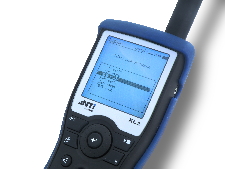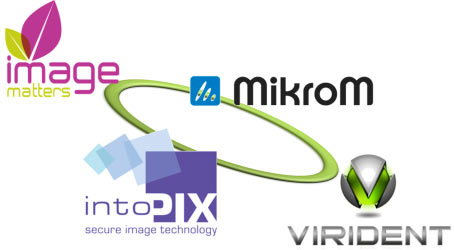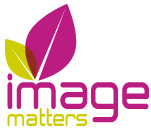Thunderbolt, IMF, UltraViolet, and Cloud technologies generate buzz.
The 2011 IBC conference, held September 8-13 in Amsterdam, generated news and discussion about all areas of production, post and content distribution. Here is a sampling of just some of the developments to watch for in the coming months.
 IMF
IMF
The Interoperable Master Format, or IMF, has been a big topic in the US, and at IBC word was spreading in the international community.
“The purpose of IMF is to create a high-quality, standardized and interoperable file framework for finished content,” explained SMPTE’s IMF Working Group chair Annie Chang, who is Disney’s VP Post-Production Technology. “IMF allows for flexible versioning so that multiple language versions and edits can be put together without the need to create full linear versions of each language/edit. IMF can store only the different pieces (audio, image and subtitles) and uses a Composition Play List to ‘mix and match’ and create the various versions needed.”
According to Chang, some of the IMF draft documents should start rolling out this Fall.
Chang encourages involvement in the SMPTE effort from hardware and software manufacturers that have systems that edit, play out and/or transcode files.
DVS has already stepped up to the plate, introducing version 4.3 of its Clipster, which debuted at IBC with new features including mezzanine format mastering for IMF workflows with extended JPEG2000 support.
Clipster’s batchlist function enables independent and automated processing of IMF, as well DCI and other distribution jobs.
Also during IBC, the Advanced Media Workflow Association (AMWA), the European Broadcast Union (EBU), and SMPTE agreed to work together to accelerate their respective efforts at driving interoperability and delivering efficient media workflows.
This will include meeting regularly and collecting input from users.
Said SMPTE President Pete Ludé: “As more media organizations rely on rapidly developed software-based tools, it is particularly important that standards-development processes meet these fast-paced needs.”
 THUNDERBOLT
THUNDERBOLT
Numerous manufacturers introduced Thunderbolt-enabled devices at IBC, demonstrating the promise of the technology.
“Thunderbolt is important because it’s incredibly fast, supporting standard protocols, which means we can create devices to work all the way up to uncompressed 4:4:4 HD on systems that before could not handle it, such as a MacBook Pro,” said AJA President Nick Rashby. “We’re very excited to see how new Thunderbolt-enabled technologies help evolve workflows.”
AJA introduced Io XT, an I/O device with two Thunderbolt ports. Said Rashby: “Io XT won’t be your ‘endpoint’ on your setup, because we support daisy-chaining connectivity of multiple Thunderbolt-enabled devices.”
This is the developing I/O device that was first exhibited as a technology demonstration at NAB. The product is slated for availability in Q4 for $1495.
At IBC, Matrox and Promise Technology hosted a demonstration of multi-layer realtime editing of uncompressed HD projects using Matrox’s MXO2 LE MAX video I/O devices and Promise Pegasus RAID storage connected to the Apple iMac via Thunderbolt technology.
Pricing for Thunderbolt-enabled Matrox MXO2 devices starts at $549, and Matrox Thunderbolt adapters for MXO2 devices are available for $199.
Blackmagic Design also made Thunderbolt-supported products a big part of its IBC exhibit.
Now available for $995, Thunderbolt-enabled UltraStudio 3D offers portable capture and playback with full resolution dual stream 3D support, as well as full SD, HD and 2K support.
Blackmagic’s second Thunderbolt-supported product, Intensity Extreme, will be available later this year. The $299 video capture and playback product is designed for professional videographers with HDMI and analog video. “We think the combination of HDMI and analog on an extremely compact Thunderbolt bus powered design combined with an affordable price will change the lives of thousands of professional videographers,” said Grant Petty, CEO, Blackmagic.
 CHANGE IN THE PROFESSIONAL FINISHING SPACE
CHANGE IN THE PROFESSIONAL FINISHING SPACE
Following news that Adobe acquired Iridas for an undisclosed sum, there was plenty of talk about what that might mean in the professional finishing space.
Adobe’s announcement of the deal suggested that Adobe Creative Suite Production Premium and Adobe Creative Suite Master Collection “are expected to gain a comprehensive set of tools so video editors can manipulate color and light for any type of content, including professional film and television.”
Bill Roberts, Adobe’s director of video product management, did not discuss specifics, but said of Adobe’s vision: “We think that the tasks of audio, effects, finishing, editing should all have dedicated interfaces and the workflow should be simple and seamless and lossless between the applications. Historically that is what we have done and that should not change going forward as we start to integrate this technology.”
Adobe was not the only company making acquisition news at IBC. In late August, 3ality Digital bought Element Technica, renaming the company 3ality Technica and making IBC its first trade show under the new brand name. The company had a booth and also hosted a reception during IBC. Plans are to beef up its R&D, while continuing to offer products from both companies with emphasis on integration. That includes integration with Element Technica rigs and 3ality’s Stereo Image Processor (SIP).
 IIF ACES
IIF ACES
In Hollywood, momentum has been building around the Image Interchange Framework, or IIF, an architecture developed by an Academy of Motion Picture Arts and Sciences-led committee of industry professionals, coupled with ACES (Academy Color Encoding Spec). The goal is to create a way to manage color consistency throughout production.
IIF ACES has already started to find its way into production, including at Encore, where colorist Pankaj Bajpai used a workflow on FX series Justified, shot by Francis Kenny, ASC.
At IBC, Blackmagic Design featured the new DaVinci Resolve 8.1 software update, which now includes ACES color space support.
In related news, Blackmagic announced that DaVinci Resolve for Microsoft Windows will be accompanied by the Mac OS X version, meaning that when a customer purchases DaVinci Resolve, he or she can choose which operating system to use.
 ULTRAVIOLET
ULTRAVIOLET
Digital Entertainment Content Ecosystem (DECE) – an industry consortium of more than 70 stakeholders including Hollywood studios and manufacturers – are getting ready to launch UltraViolet, a DRM system that effectively would allow each customer to create a content library in the cloud that could be accessed on any supported device.
At IBC, preparations for the launch were evident at the DTS booth, which was demoing its MediaPlayer using UltraViolet Common File Format (CFF) files created with upcoming version 2.0 of the Digital Rapids Transcode Manager automated transcoding software (which was demoed at the Digital Rapids booth).
“From mobile phones and tablets to PCs and connected TVs, multi-screen viewing and the increasing volume of digital content are driving fundamental shifts in the way media is distributed and consumed,” said Brick Eksten, president of Digital Rapids. “UltraViolet will play a crucial role in unlocking the potential of multi-screen media consumption, and we’re excited to be continuing our successful partnership with DTS by working together in support of the standard.”
Just after IBC came the earliest content announcements. Upcoming home entertainment releases of Horrible Bosses, Green Lantern, Harry Potter and the Deathly Hallows Part 2 (Warner Bros.), as well as The Smurfsand Friends With Benefits (Sony) will support UltraViolet.
DECE members include Fox, Lionsgate, Paramount, Sony, Universal, Warner Bros., Deluxe, Technicolor, LG, Samsung, Microsoft, Netflix, and Best Buy.
UltraViolet’s rollout begins next week in North America.
 THE CLOUD
THE CLOUD
The entertainment technology community continues to explore ways that the cloud can be incorporated into workflows to create efficiencies. The models that were featured this year at IBC primarily surrounded broadcast applications.
Quantel, for instance, showed the next stage of its QTube cloud-based broadcast production workflow at IBC, which now includes the ability to integrate files held on generic IT storage, and well as to access and combine content from multiple sites.
Rogers Media in Canada is already using QTube for coverage of live events including MLB and NHL games. Said Frank Bruno, VP Engineering for Rogers Media: “For us, QTube is a problem solver; we have so many stations across the country and also camera people going to multiple venues and events. As long as you are near a connection, you have contact back and forth. We don’t have to worry about shipping disks or hard drives.”
At IBC, Chyron offered a look at its AXIS World Graphics cloud-based graphics creation system. Also aimed at broadcasters, the system is designed for reporters, production assistants, and news producers who would have access to prebuilt templates via a web browser to quickly create graphics for outlets including websites and mobile devices.
Avid Technology released a white paper outlining its view of the media cloud. It explained: “Avid strongly believes that the successful media enterprise will focus on delivering new consumer experiences via distribution platforms that create new revenue models.
“Forward-looking digital media strategies must include cloud-based services in addition to traditional intranet and internet-based solutions. Avid’s Integrated Media Enterprise (IME) framework provides a blueprint for organizations to confidently embark on this journey and take full advantage of the opportunities presented by cloud computing – now.”
 Get the big picture here and here.
Get the big picture here and here.

 IMF
IMF THUNDERBOLT
THUNDERBOLT CHANGE IN THE PROFESSIONAL FINISHING SPACE
CHANGE IN THE PROFESSIONAL FINISHING SPACE IIF ACES
IIF ACES ULTRAVIOLET
ULTRAVIOLET THE CLOUD
THE CLOUD